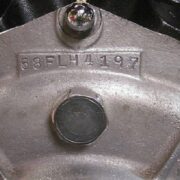The coolant reservoir is a small container that holds coolant. It usually sits on top of the engine and contains a blend of water and antifreeze chemicals. When the engine is cold, the coolant in the reservoir is often frozen, which makes it difficult for the engine to function properly.
If your car has a coolant reservoir that’s empty or has a low level of fluid, you may have trouble starting your car in the morning or during winter weather. The low level of fluid in your reservoir also reduces performance and can cause issues with your car’s power steering.
You can refill your reservoir with new coolant, but this process isn’t always easy or safe. If you have an older car that doesn’t have a full-sized reservoir underhood you’ll need to drain the entire system before refilling it with new fluid.
You need to know where your car coolant reservoir is and what type of coolant you should use or it may overheat. So, look further here:
Table of Contents
Open the Hood
The coolant reservoir is located on the top of the engine. It should be easy to open with a standard screwdriver, but if you have one of those special tools that fit inside your socket set and make it easier to get at screws, use that.
The reservoir is an important safety feature because if you let your engine overheat by running it too long or letting it idle too low, there will be no way for you to tell until something goes wrong.
Add Coolant to the Reservoir
Some modern cars have a coolant reservoir that’s filled with coolant. This is a good idea, because it means that you won’t have to worry about the car overheating or boiling out. However, it also means that the coolant level in the reservoir will be lower than it should be. If your car has a coolant reservoir, add some coolant back into it before you do anything else.
If you’re starting with an empty reservoir and no coolant, then you’ll need to fill it up with water first. Add about 6 gallons of water to the reservoir and let it sit for 10 minutes. Then drain half of the water out of your cooling system (just leave enough in there so that any leaks don’t go dry).
Source Link https://arospeed.com/
















Comments